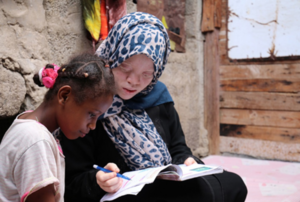
16 Aug 8 80 Cities: Building Better Cities for and with Families
This blog post was first published in the Global Family Research Project website.
At 8 80 Cities, we focus on children and older adults because we know the two bookend stages of life are increasingly characterized by limitations in freedom, mobility, and independence. Children and older adults also experience fewer opportunities for social engagement, physical activity, and participation in community building and decision making.
What are the best cities for young children and families? Where do young children, their parents, and caregivers play an active role in shaping city building processes today?
We set out to answer these questions through a research project done in partnership with the Bernard van Leer Foundation. The resulting report, Building Better Cities with Young Children and Families, explores strategies and key engagement principles city and community leaders might consider when working with a variety of residents, including young children 0–5 years, pregnant mothers, caregivers, and families. We interviewed 24 experts from 17 countries on their initiatives, experiences, and challenges with engaging young children and families in city design.
Through our research, we were heartened to discover grassroots and community-based organizations around the world that are creating opportunities for young children and families to participate in public life. We encountered passionate individuals and organizations pushing this work forward in their cities. And while these efforts are inspiring, we couldn’t find any city in the world where young children, families, and caregivers play an active role in shaping city building processes.
As we interviewed experts from around the world, similar themes emerged, and we began to connect the dots. Many groups were facing the same barriers in reaching their target populations, and when they did succeed, the experts struggled with how to meaningfully engage their audiences. Our report outlines recommendations to overcome basic barriers and ideas to meaningfully engage these groups of community residents, with each suggestion accompanied by a hands-on case study from across the world. Below are a few examples of our research findings.
Capture children’s understanding of their spatial environment
We know young children communicate and express themselves differently than adults do. Using traditional methods of community engagement won’t attract the attention of children, let alone meaningfully invite their participation.
Utilize photos and visual media: We can learn so much about children’s needs when they are given the appropriate tools to express themselves and participate. The Small Child in Focus (Criança Pequena Em Foco) project in Rio de Janeiro, Brazil, gives children cameras to explore and document their neighbourhoods. Children control the process and capture their surroundings from their own points of view. They decide what they like or don’t like, and what could be improved in the neighbourhoods.

Children were provided with cameras to capture places from their own perspectives. (Rio de Janeiro, Brazil)
Child-led tours: Giving children the independence to lead tours is a powerful leadership-building opportunity for children, and a valuable learning experience for their families. In Boulder, Colorado, Growing Up Boulder invited 3- and 4-year-olds to lead adults on tours of public spaces. City staff members observed and followed as the children walked and played their way through areas they enjoyed and places they avoided. Following the tours, the children drew pictures, made models, and talked to city staff about their ideas for the spaces.

Children led tours through the Boulder civic area and then hand drew improvements on current photos of what they’d like to see become reality. (source: GrowingUpBoulder.org)
Use older children as a proxy
Sometimes children feel intimidated around adults. By developing opportunities for younger children to learn from friends, older siblings, and other children, organizations create ways for children to relate to one another. — Celine Woznica, Child to Child
The child-to-child method: It’s a great leadership opportunity for the older siblings, especially in communities lacking adequate access to education, to guide and support children’s learning. Celine Woznica of Child to Child explains that her method promotes children’s participation in issues that not only affect them but their wider community as well. It is not just child to child, but child to family, child to community. The child-to-child method works best where children are supported by the entire community, and everyone is engaged—from moms and dads to grandparents and aunts. It enhances learning for all.
Embed learning and engagement opportunities for young children and families in the built environment
 From creating libraries in laundromats, to placing conversation-prompting graphics at grocery stores, the potential to embed learning moments for families into the built environment is limitless.
From creating libraries in laundromats, to placing conversation-prompting graphics at grocery stores, the potential to embed learning moments for families into the built environment is limitless.
Brain building: The Brain Builder Project in Massachusetts is a public awareness campaign that develops awareness about the importance of investing resources and time in young children. Communities create “brain builder zones” by placing advertisements in unlikely places like subways and bus stops to create teachable moments during public transit rides.
Read the full report for more on engagement methods, principles, and case studies here.



